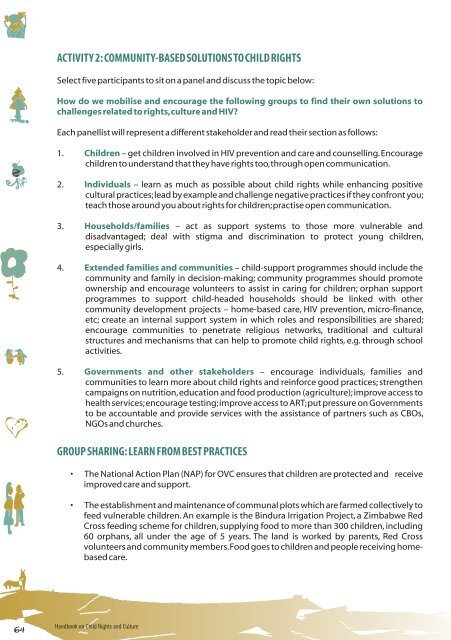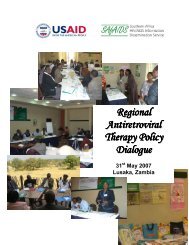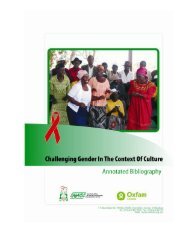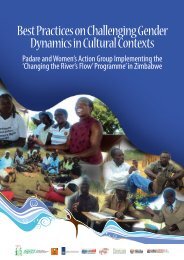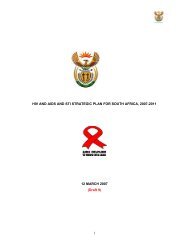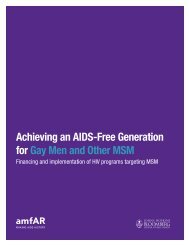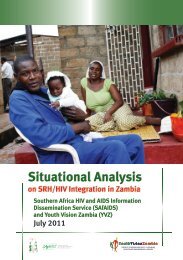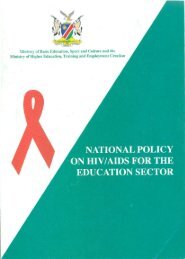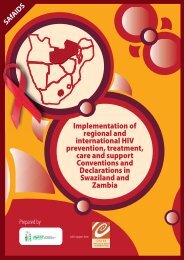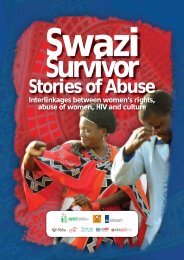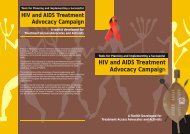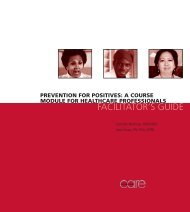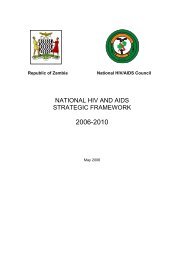CHILDREN TO THE FORE! - SAfAIDS
CHILDREN TO THE FORE! - SAfAIDS
CHILDREN TO THE FORE! - SAfAIDS
Create successful ePaper yourself
Turn your PDF publications into a flip-book with our unique Google optimized e-Paper software.
ACTIVITY 2: COMMUNITY-BASED SOLUTIONS <strong>TO</strong> CHILD RIGHTSSelect five participants to sit on a panel and discuss the topic below:How do we mobilise and encourage the following groups to find their own solutions tochallenges related to rights,culture and HIV?Each panellist will represent a different stakeholder and read their section as follows:1. Children – get children involved in HIV prevention and care and counselling.Encouragechildren to understand that they have rights too,through open communication.2. Individuals – learn as much as possible about child rights while enhancing positivecultural practices;lead by example and challenge negative practices if they confront you;teach those around you about rights for children;practise open communication.3. Households/families – act as support systems to those more vulnerable anddisadvantaged; deal with stigma and discrimination to protect young children,especially girls.4. Extended families and communities – child-support programmes should include thecommunity and family in decision-making; community programmes should promoteownership and encourage volunteers to assist in caring for children; orphan supportprogrammes to support child-headed households should be linked with othercommunity development projects – home-based care, HIV prevention, micro-finance,etc; create an internal support system in which roles and responsibilities are shared;encourage communities to penetrate religious networks, traditional and culturalstructures and mechanisms that can help to promote child rights, e.g. through schoolactivities.5. Governments and other stakeholders – encourage individuals, families andcommunities to learn more about child rights and reinforce good practices; strengthencampaigns on nutrition,education and food production (agriculture);improve access tohealth services;encourage testing;improve access to ART;put pressure on Governmentsto be accountable and provide services with the assistance of partners such as CBOs,NGOs and churches.GROUP SHARING: LEARN FROM BEST PRACTICES• The National Action Plan (NAP) for OVC ensures that children are protected and receiveimproved care and support.•The establishment and maintenance of communal plots which are farmed collectively tofeed vulnerable children. An example is the Bindura Irrigation Project, a Zimbabwe RedCross feeding scheme for children, supplying food to more than 300 children, including60 orphans, all under the age of 5 years. The land is worked by parents, Red Crossvolunteers and community members.Food goes to children and people receiving homebasedcare.64Handbook on Child Rights and Culture


